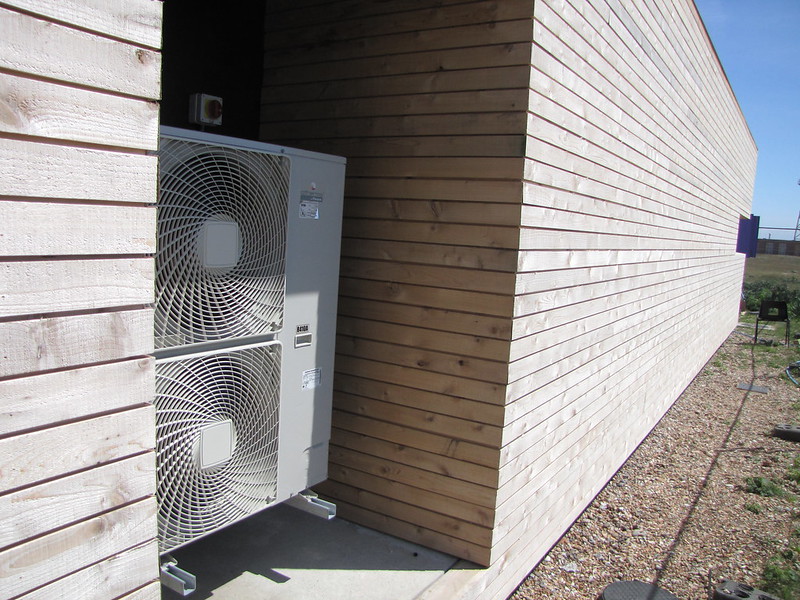Air source heat pumps are a versatile heating and cooling solution that can effectively cool your house, especially during extreme heat. These systems work by transferring heat from the indoor air to the outdoor environment, providing a refreshing and energy-efficient way to maintain a comfortable temperature in your home.
How Air Source Heat Pumps Work for Cooling
Air source heat pumps use a refrigeration cycle to regulate the temperature in your home. During the cooling mode, the system’s compressor pumps refrigerant to absorb heat from the indoor air. The indoor coils, filled with cold refrigerant, attract heat from the indoor air, transforming it into a cool breeze that is then circulated back into your home. The warmed refrigerant is then sent to the outdoor unit, where the heat is dissipated to the outside environment.
This process is similar to how a traditional air conditioning system works, but with a key difference: air source heat pumps can also be used for heating during colder months by reversing the refrigerant flow and extracting heat from the outdoor air, making them a versatile choice for year-round comfort.
Advantages of Using Air Source Heat Pumps for Cooling
One of the primary advantages of using air source heat pumps for cooling is their energy efficiency. These systems are designed to transfer heat rather than generate it, which means they can use less energy and maintain more consistent temperatures compared to standard and high-capacity air conditioning options, especially during heat waves.
Here are some additional benefits of using air source heat pumps for cooling:
-
Consistent Temperatures: Air source heat pumps can maintain a more consistent temperature throughout your home, reducing the need for frequent adjustments and providing a more comfortable living environment.
-
Improved Indoor Air Quality: By removing heat and humidity from the indoor air, air source heat pumps can help improve the overall air quality in your home, reducing the presence of allergens and pollutants.
-
Versatility: As mentioned earlier, air source heat pumps can be used for both heating and cooling, making them a versatile choice for year-round comfort.
-
Reduced Carbon Footprint: Since air source heat pumps do not generate heat but rather transfer it, they can have a lower carbon footprint compared to traditional air conditioning systems, especially when paired with renewable energy sources.
Factors to Consider When Using Air Source Heat Pumps for Cooling
While air source heat pumps can effectively cool your house, there are a few factors to consider when using them for this purpose:
-
Condensation: When the refrigerant flow is reversed to cool the house, the pipes and radiators may sweat, leading to wet surfaces and potential condensation issues. This can be mitigated by proper insulation and drainage systems.
-
Air Distribution: Cold air does not naturally rise, so you may need to strategically place air vents or use additional fans to ensure even cooling throughout the room or house.
-
Cooling Capacity: It is essential to ensure that the cooling system is designed to handle the heat gain from various sources, such as the sun, people, appliances, and other heat-generating elements in the room.
-
Climate Considerations: The performance of air source heat pumps can be affected by the outdoor temperature and humidity levels. In very hot or humid climates, the system’s efficiency may be reduced, and additional cooling capacity may be required.
-
Noise Levels: Air source heat pumps have an outdoor unit that can generate some noise during operation. It is important to consider the noise levels and choose a system that meets your noise tolerance requirements.
Proper Installation and Maintenance
To ensure the optimal performance and longevity of your air source heat pump for cooling, it is crucial to have the system properly installed by a qualified HVAC professional. They will ensure that the unit is sized correctly for your home, the refrigerant charge is accurate, and the airflow is balanced for efficient cooling.
Regular maintenance is also essential for maintaining the system’s efficiency and preventing potential issues. This includes:
- Cleaning or replacing air filters regularly
- Inspecting and cleaning the outdoor unit
- Checking and tightening electrical connections
- Monitoring refrigerant levels and recharging if necessary
- Cleaning the indoor and outdoor coils
- Lubricating moving parts as needed
By following these best practices for installation and maintenance, you can maximize the cooling performance and energy efficiency of your air source heat pump, ensuring a comfortable and cost-effective indoor environment throughout the year.
Conclusion
In summary, air source heat pumps can effectively cool your house, especially during extreme heat. These versatile systems offer energy-efficient cooling and heating in a single unit, making them a popular choice for year-round comfort. However, it is essential to consider factors such as condensation, air distribution, cooling capacity, and noise levels when using air source heat pumps for cooling. With proper installation and regular maintenance, you can enjoy the benefits of this technology and keep your home cool and comfortable, even during the hottest summer days.

